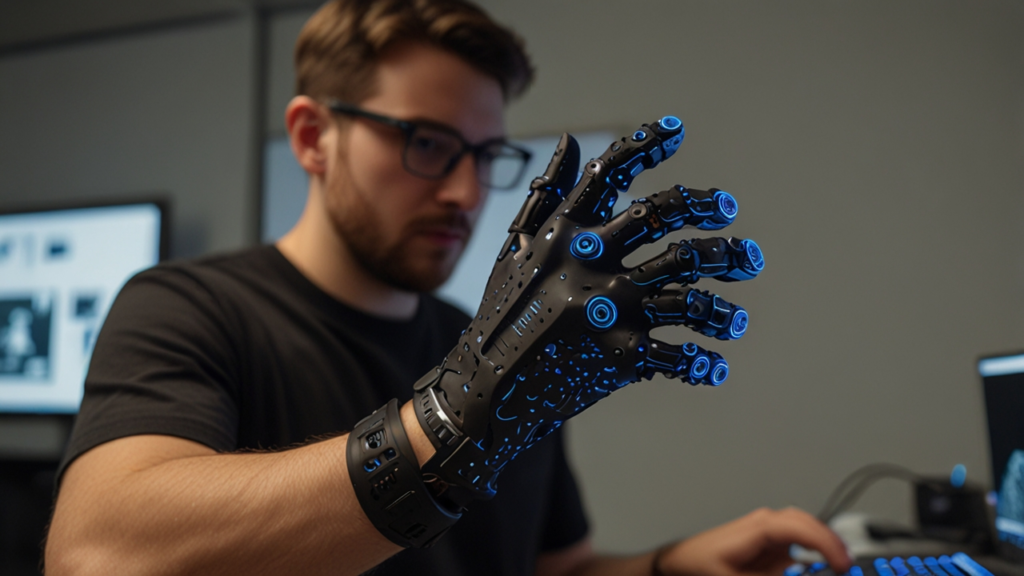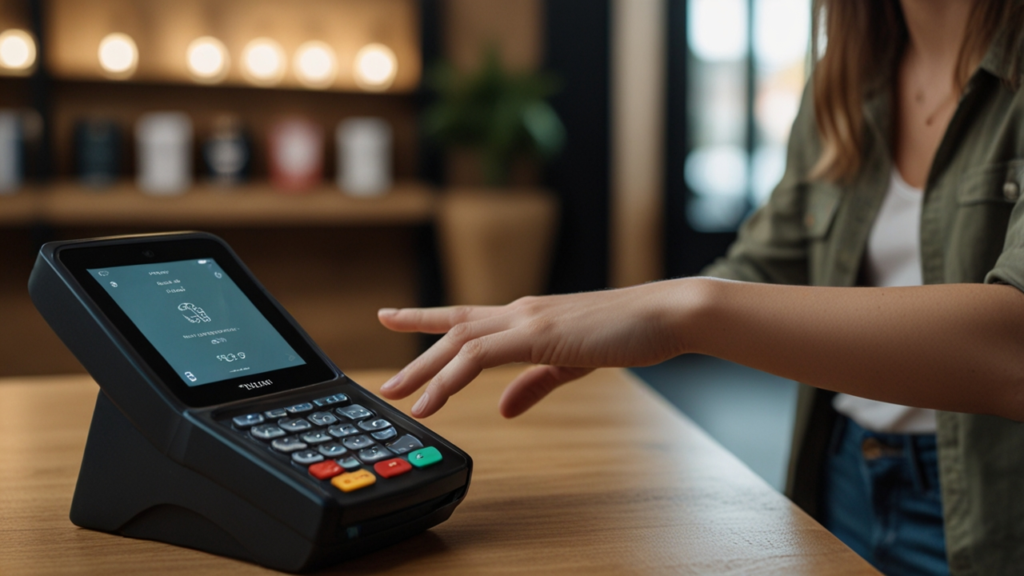Fitness Tracker Evolution 2025
The world of wearable technology has come a long way since the early days of step meters and heart rate monitors. Today, devices integrate advanced sensors and real-time data analysis to support an active lifestyle. With improvements in design and functionality, this revolution has captured the imagination of tech enthusiasts and casual users alike.
In this article, we explore how these devices have evolved, what drives current innovation, and where the future may lead. We will discuss the interplay between sensor technology, connectivity, and design, all while keeping the content approachable. Readers from diverse backgrounds will find something of value in this deep dive.
Our discussion is enriched with case studies, external research, and insights from industry experts. We encourage you to reflect on your experiences and consider how these trends might affect your daily routines.
Table of Contents
- Introduction to Fitness Tracker
- Evolution and History of Fitness Tracker
- How Health Monitoring Enhances Fitness Tracker
- Activity Measurement Systems and Their Applications
- Real-World Case Studies of Fitness Tracker
- Biometric Wearable in Modern Fitness Tracker Solutions
- Future Trends: Exercise Analytics and Beyond
Introduction to Fitness Tracker
Understanding the Basics
At its core, a fitness tracker is a small electronic device worn on the body. It collects data related to your physical activity and vital signs. Many enthusiasts appreciate how these devices combine practicality with style.
Early examples, such as the 10,000 steps meter invented by Dr. Yoshiro Hatano, provided simple yet effective tracking of daily movement. This concept soon evolved when companies started integrating wireless heart rate monitors in the 1980s.
Today, modern trackers incorporate features such as GPS and optical sensors, making these gadgets essential for anyone interested in personal health. For more insights on early innovations, check out the Audrey Watters heart rate monitor history article. How might understanding these basics change the way you view your daily routines?
Key Attributes of a Modern Tracker
Modern devices are celebrated for their portability and efficiency. They are engineered with multiple sensors like accelerometers and gyroscopes to capture movement with precision. A key attribute is the ability to process data in real time using embedded algorithms.
Manufacturers have also integrated connectivity features that allow syncing data to smartphones and cloud platforms. This makes it easy for users to monitor trends and share information. You can explore more on design evolution via Cutting-Edge Technologies.
With high-resolution displays and customizable interfaces, the look and feel of these devices appeal to a broader audience. Could these improvements inspire you to adopt a more active lifestyle?
Evolution and History of Fitness Tracker
From Simple Meters to Smart Devices
The history of these devices spans several decades. Initially, fitness tracking was limited to simple pedometers. The 1960s saw the invention of the Manpo-kei, a breakthrough that set a 10,000-step goal benchmark.
In the 1980s, wireless heart rate monitors, as seen in products by Polar Electro, gave users real-time feedback on cardiovascular intensity. Later, the integration of accelerometers into mobile phones during the early 2000s introduced multidimensional activity tracking.
For further historical context, refer to the Wikipedia Fitness Tracker page. Have you ever wondered how a simple pedometer transformed into a multifunctional smart device?
Milestones in Technological Advancements
Major milestones include the transition from standalone modules to rod-like devices that bundle multiple functions. Wristbands and smartwatches became common by the late 2000s. These devices now incorporate GPS, altimeters, and optical heart rate sensors.
Social media played an important role in gamifying the experience, encouraging competition and engagement. A detailed analysis of these trends is available on Smart Devices.
These advancements continue to influence both professional sports and everyday wellness routines. Does recognizing these milestones motivate you to think about your own fitness journey?
How Health Monitoring Enhances Fitness Tracker
Integrating Vital Sign Sensors
Modern trackers offer more than just step counts. They measure heart rates, sleep quality, blood oxygen levels, and in some cases even ECG. These capabilities have expanded the horizon of personal health data collection.
Many devices now deploy photoplethysmography, a technique that uses light to detect blood flow. Data is transmitted to cloud-based systems for comprehensive analysis. For a detailed clinical perspective, consider the PubMed study on fitness trackers.
Such health monitoring features help both casual users and athletes track their well-being. Do you think these sensors could help you better manage your day-to-day health?
Benefits of Remote Patient Monitoring
The COVID-19 pandemic expedited the use of remote patient monitoring (RPM) services. Over 23 million patients in the U.S. benefitted from RPM in 2020. These applications are now being integrated with personal devices.
Data collected from trackers is increasingly used by healthcare professionals to inform treatment decisions. This trend promotes preventive care and chronic disease management. Additional details are discussed in the Prevounce RPM history article.
With these capabilities, trackers not only support fitness routines but also contribute to critical health care. How could remote monitoring transform your approach to well-being?
Activity Measurement Systems and Their Applications
Technologies Behind Accurate Activity Measurement
Activity measurement relies on sophisticated sensor arrays. Devices use accelerometers, gyroscopes, and GPS sensors to track various movements accurately. These systems allow for precise measurement of physical exertion.
Furthermore, the inclusion of optical sensors adds the ability to monitor vital signs concurrently. This intersection of hardware and software produces detailed activity profiles. Discover more about these systems through Innovative Solutions.
Innovations in sensor accuracy have enabled these devices to provide near-clinical measurements while remaining consumer-friendly. Would you consider these measurement systems reliable for your fitness regime?
Various Applications in Daily Life
The applicability of these systems extends to sports, wellness programs, and even elderly care. Devices have been used by professional athletes during intense training sessions. Simultaneously, regular users benefit from insights that drive healthier lifestyles.
Specific applications include exercise load management and early illness detection. These diverse uses underscore the versatility of modern tracking technology. How might an accurate activity measurement system impact your day?
These advancements have made it possible to integrate detailed movement analytics into daily routines, ensuring that users enjoy better personal management and more informed decisions.
Real-World Case Studies of Fitness Tracker
Impactful Success Stories
Success stories illustrate how fitness trackers have dramatically improved health outcomes. For instance, the Apple Watch has been credited with saving lives through its arrhythmia and fall detection alerts. Studies report that it accurately detected atrial fibrillation in 84% of cases.
Fitbit contributed to public health insights during the COVID-19 pandemic by identifying early changes in resting heart rate and sleep patterns. Additionally, the Oura Ring proved invaluable by monitoring NBA players during the bubble period. Explore more about these innovations by visiting Future Devices.
Each case underscores the potential to improve both preventive care and athletic performance. Have these stories inspired you to reevaluate your own use of wearable technology?
Comprehensive Comparison of Case Studies
The following table highlights a comparison among several landmark examples. It summarizes their inspirations, applications, and the regions where they made an impact. These details help illustrate the broad scope of wearable technology implementation.
Comprehensive Comparison of Case Studies
| Example | Inspiration | Application/Impact | Region |
|---|---|---|---|
| Apple Watch | Real-Time ECG | Arrhythmia Detection; Fall Alerts | USA, Global |
| Fitbit | Step-Counting Pioneers | Public Health Insights; COVID-19 Detection | Global |
| Oura Ring | Sleep and Load Management | Player Health Monitoring | Finland/USA |
| UNICEF Kid Power | Incentives for Activity | Boosting Daily Activity in Children | US/UK, Global |
| Japan Elder Care | Step Counters in Elderly Programs | Reducing Hospitalizations | Japan, Global |
This detailed comparison offers insight into the diverse applications of these devices. Do these case studies alter your perspective on how technology can change lives?
Biometric Wearable in Modern Fitness Tracker Solutions
Integrating Advanced Biometric Sensors
Recent advancements have led to the integration of biometric sensors in wearable devices. These sensors capture data on metrics such as blood oxygen saturation and skin temperature. The technology behind these sensors has enabled early detection of health concerns and provided more personalized feedback.
Innovations include the use of photoplethysmography for heart rate monitoring and non-invasive sensors that may one day track glucose levels. The synergy between sensor hardware and smart algorithms creates a robust framework for health insights. Such breakthroughs are paving the way for more reliable clinical applications.
Is it possible that these innovative sensors could redefine how you monitor your wellness in everyday life?
Design and Usability in Wearable Solutions
Design plays a critical role in the adoption of biometric wearables. Manufacturers emphasize sleek, comfortable designs that do not compromise on functionality. The user interface is crafted to be intuitive while providing detailed health information at a glance.
Usability studies show that simpler, modern interfaces improve user engagement and retention. Improved battery life and data synchronization are among the benefits received from continuous design upgrades. How might a better-designed device influence your trust in wearable technology?
The interplay between design and functionality ensures that wearables can serve both as fashion accessories and powerful health devices.
Future Trends: Exercise Analytics and Beyond
Emerging Innovations in Analytics
Looking ahead, the integration of advanced analytics is set to revolutionize wearable technology. Artificial intelligence is being deployed to predict health issues and provide personalized coaching. These technologies will evolve from reactive data presentation to proactive health management.
Future devices may leverage non-invasive techniques to monitor parameters such as hydration and blood pressure without traditional methods. Additionally, integration with electronic health records will streamline preventive care. This evolution positions exercise data as a critical part of daily health management.
Do you believe that smarter analytics can transform the way you plan your workouts and daily routines?
Expanding Applications in Daily Routines
As exercise analytics become more refined, their application will no longer be confined to athletic performance. The convergence of wearable technology and big data means that users will soon receive tailored insights for every aspect of their lives. The future holds promising improvements in cognitive and emotional well-being monitoring as well.
This new phase will see devices integrating feedback on mental well-being alongside physical data. Experts suggest that the next generation of wearables could support an interconnected ecosystem of health management. Can you imagine a future where your daily activity recommendations are entirely personalized?
These innovations will not only optimize physical performance but also enhance overall quality of life through smarter, data-driven decisions.
Design Beyond Boundaries
In today’s world, creative problem-solving has emerged as a crucial component for innovation. Designers and engineers from diverse disciplines are collaborating to create solutions that transcend traditional boundaries. They employ design thinking processes to arrive at novel ideas, ensuring that the final product serves both functional and aesthetic purposes.
Interdisciplinary collaboration is a cornerstone of this new era. By combining elements of art, psychology, and technology, teams are designing solutions that speak to the human experience on multiple levels. For instance, methods often include rapid prototyping and user experience research to test ideas early in the process.
These creative problem-solving strategies encourage a mindset that values experimentation and iteration. Rather than sticking to the status quo, innovators are willing to embrace failure as an opportunity to learn and adapt. This approach is proving to be highly effective in building robust, user-oriented solutions.
Furthermore, the integration of diverse viewpoints has helped create designs that are not only innovative but also sustainable. The focus on eco-friendly materials and cost-effective production methods ensures that new ideas can be scaled in a responsible way. As you reflect on your own experiences, consider how a willingness to experiment might lead to breakthroughs in your projects.
This emphasis on creative methods reminds us that every challenge holds the potential for innovative design. The journey from concept to execution is as much about open-minded exploration as it is about technical prowess. In the end, design becomes not just a solution but a celebration of human ingenuity and collaboration.
FAQ
What defines a fitness tracker?
A fitness tracker is a wearable device that measures physical activity and vital signs. It typically includes sensors such as accelerometers and optical heart rate monitors for data collection. These devices are used to help people monitor lifestyle and health-related parameters.
How did the concept originate?
The concept began with simple pedometers like the Manpo-kei created in the 1960s by Dr. Yoshiro Hatano. Over time, technological advancements such as wireless heart rate monitors in the 1980s led to the sophisticated devices we see today.
Why is remote patient monitoring important?
Remote patient monitoring enables healthcare professionals to track patient health continuously. It leverages data from wearable devices to detect early signs of health issues, thereby supporting preventive care and chronic disease management.
What future developments can we expect?
Future advancements may include non-invasive biometric sensors for parameters like glucose and blood pressure. Additionally, artificial intelligence will play a larger role in providing proactive health recommendations through integrated analytics.
How does design influence user experience?
The design of wearable devices is critical for user engagement. A user-friendly interface paired with comfortable form factors enhances usability and ensures that devices meet both functional and aesthetic considerations.
Conclusion
In summary, the evolution of the fitness tracker illustrates significant progress from rudimentary step counters to sophisticated devices that integrate multiple sensors and advanced analytics. The journey spans from early innovations to modern solutions that tie into broader healthcare systems. This evolution not only reflects technological progress but also an increase in personal empowerment for health management.
By understanding these trends, you can make informed decisions about incorporating wearable technology into your daily routine. Whether you are an athlete or someone simply looking to maintain better wellness, these insights offer a valuable roadmap for the future. For more information on the latest trends in wearable innovation, feel free to visit the Mobile & Gadgets category and let your curiosity drive you further.
If you have any questions or wish to share your thoughts, please Contact us. Have you experienced similar technological advances in your personal routines?


